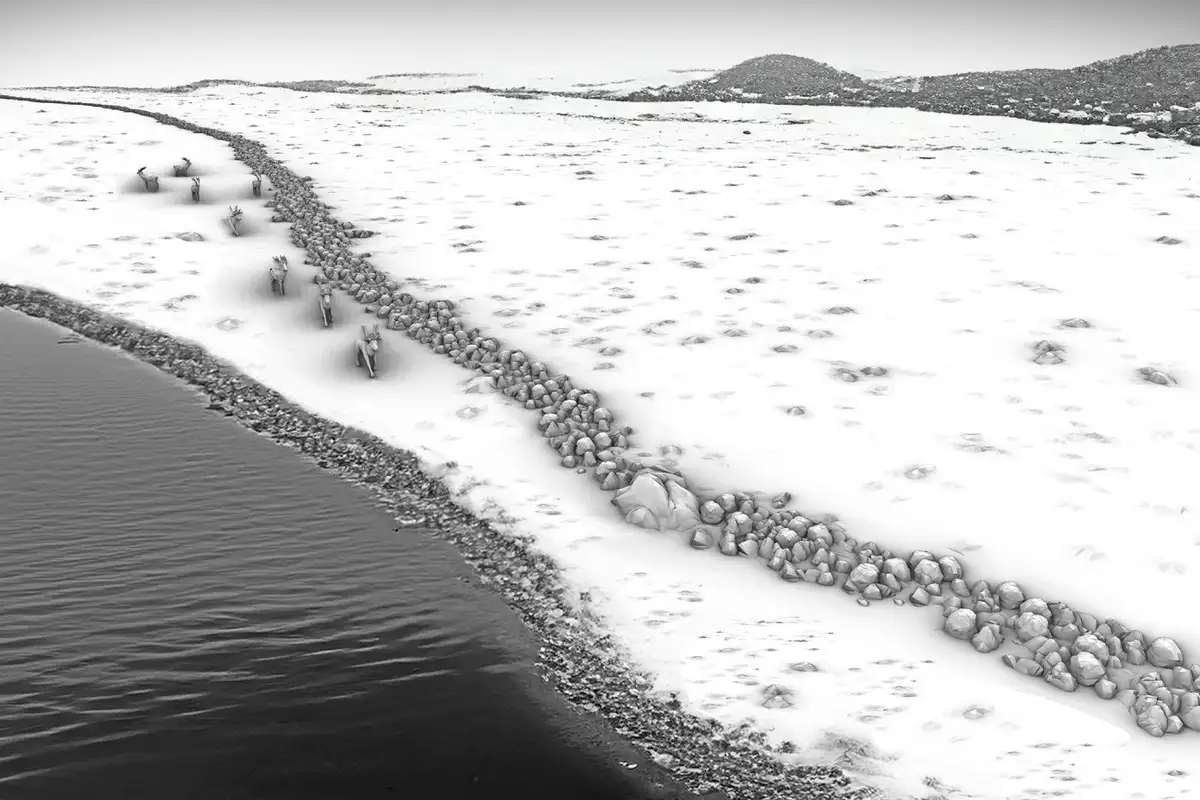Skvělý článek. Díky výstavbě větrných elektráren je v oblasti velké množství dalších nálezů. Je docela zajímavé, že ještě Římané slýchali, že za určitých podmínek se dalo přejít do Británie „suchu nohou“
Long stone mound found at the bottom of the Baltic, may be the oldest megalithic structure in Europe
Categories: Nálezy nejenom s detektorem v západní Evropě
At the bottom of the Gulf of Mecklenburg in northern Germany, scientists have discovered a stone mound nearly a kilometre long and up to 11,000 years old. It was probably used for hunting reindeer or other animals, and it is probably the oldest megalithic structure in Europe.
The mound was discovered in 2021 by accident, during a student excursion aboard a ship with a sonar system. Located at a depth of 21 m below the surface, it measures 971 m in length, with an average width of around 2 m and a height of between half a metre and one metre. It consists of 1,673 stones, the vast majority of which are a few decimetres in size, while others are up to 3 m in diameter.
The purpose of the mound is not entirely clear; it was built on the edge of a lake or marsh, which might suggest its use in hunting, for example, the then abundant reindeer. In pursuit, animals tend not to jump over linear features in the landscape, such as streams and various ditches, but to run along them. Thus, one group of hunters could chase and another, hidden along the embankment behind stones, could hunt the running game. Therefore, this "wall" did not have to be very high or continuous. Alternatively, hunters could chase the herd into the narrow corridor between the mound and the water, slowing the game down and making it easier to hunt. A possible glacial origin of the structure was also considered, but this was soon dismissed as the mound runs perpendicular to the direction of the glacier's advance.
The minimum age of the entire structure is 8,500 years, however radiocarbon data obtained from thewood fragments in nearby sediments suggest that it may have been built as early as 11 000 years ago, at the end of the last ice age. At this time, the area was part of the now extinct Doggerland, which stretched across northern Europe and connected the British Isles to Europe. Due to its numerous wetlands and lakes, it was a heavily populated area in the Mesolithic period, but there are no shortage of Early Palaeolithic and Neanderthal finds. Doggerland disappeared in the context of rising sea levels around 6 500 BC.
The mound will continue to be explored by sonar and sediment echolocation. Diving operations are also planned to find archaeological material (stone tools, bones, or wood fragments) that could help explain the purpose and age of the structure.
Sources
https://ct24.ceskatelevize.cz/clanek/veda/vedci-objevili-v-baltskem-mori-dosud-nejstarsi-evropskou-superstrukturu-vznikla-mozna-uz-pred-346009
https://phys.org/news/2024-02-stone-age-hunter-baltic-sea.html
https://www.seznamzpravy.cz/clanek/zahranicni-vedci-objevili-val-na-dne-baltu-mozna-jde-o-nejstarsi-megastavbu-v-evrope-245642

deteil of the wall

reconstruction of the mound
 Sonar image
Sonar image

Extinct Doggerland
The article is included in categories:
- Archive of articles > Archaeology > Finds and rescue research abroad > Nálezy nejenom s detektorem v západní Evropě
Post
Průměrný lidský život netrvá tak dlouho, aby to bylo postřehnutelné, ale Země se neustále mění, transformuje. Pevniny se potápí na dna oceánů a horotvorné procesy je pak zase vyzvedávají. Proto je možné najít pravěké valy na dně moře, nebo trilobity v Alpách. 
Tak to je trochu rozdíl. Deset tisíc let staří kamenné stavby a 545 milionů let je datování Kambria. Ty lovci zažili ústup ledovce, ale nikoli posun kontinentů. A lidé v těch místech žili proto, že vělká část vody byla uvězněná v pevninském ledovci a díky tomu tam byla souš, bažiny a jezera. Dno se nikam nepotopilo.
Mimochcem tohle si můžeme brzy zopakovat. Pokud se zastaví tepelný výměník zvaný Golfský proud. Párkrát se to již stalo, žijeme přibližně na úrovni Québecu. Tomu se příroda nepřispůsobí, zcela by to proměnilo jak floru tak faunu.
Jakej blbec stavěl na dně Baltu val ?
Skvělá práce, Brumlo. Zachytil jsem něco málo v médiích, ale tohle je jednoznačně o dvě třídy vejš.
Kacinitram: pračlovek 













